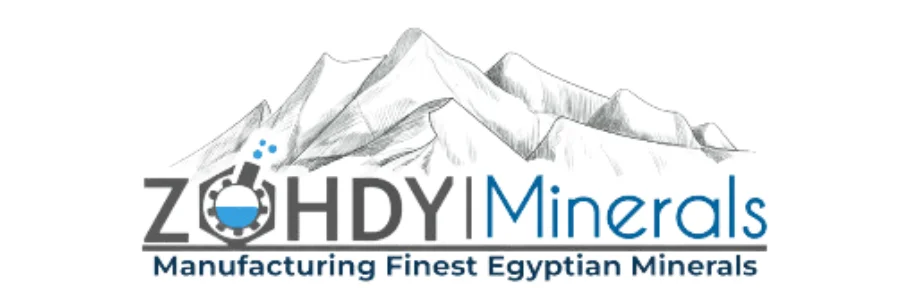Limestone is first prepared at the quarry for use by crushing and sizing it to make it suitable for the process. This is done professionally with Zohdy Minerals Egypt.
Calcination of Raw Limestone
The treatment of calcined limestone through hydration is carried out in order to produce slaked lime, followed by various operations of transportation, storage, and handling.
An Overview of Iron and Steel
Iron is a metal that is characterized by its lustrous and flexible nature, and it is also known for its magnetic properties that allow it to attract other metals. Iron has the ability to reflect light when coated with chromium. This metal has been used in construction for almost 5,000 years.
As for steel, it is an alloy of iron and carbon, with the carbon content not exceeding 2%. Most types of steel, in addition to carbon, contain a small amount of manganese. Steel is the primary material used in the construction of bridges, skyscrapers, railways, and automobiles. Zohdy Minerals Egypt plays a major role in many of these fields.
The Addition of Limestone in the Iron and Steel Industry
After the mining process, limestone undergoes many treatments before being used in various operations. These treatments enhance its chemical properties, making it a valuable mineral with a wide range of industrial applications. The iron and steel industry is the primary consumer of limestone products.
When adding limestone in the iron and steel industry:
-
It must contain at least 85% calcium carbonate and a low percentage of alumina.
-
Similarly, for use in iron and steel production, limestone should have not less than 92% calcium carbonate and extremely low impurities, especially silica.
-
All of these are available through Zohdy Minerals Egypt.
The most important uses of limestone in the iron and steel industry are:
-
In Blast Furnaces
Finely ground or granular limestone with low sulfur and alkali content is used with finely ground lime to convert iron into pig iron in blast furnaces. The pig iron is later processed into steel.
-
To produce one ton of iron, about 410 kg of limestone is required, making limestone crucial in the iron and steel industry, as is the case with Zohdy Minerals Egypt.
-
-
Removal of Impurities
Limestone removes impurities such as silica, phosphorus, and sulfur from iron ore during smelting. Lime combines with these impurities to form slag, which separates from the steel and is removed. Typically, around 40 kg of quicklime per ton of liquid steel is added, improving the steel’s quality and enhancing its properties.
-
Fluxing Agent
In the process of adding limestone in the iron and steel industry, lime is used as a flux in electric arc furnaces and basic oxygen furnaces.
-
Required Properties
-
The limestone must be very hard, with a compressive strength not less than 200 kg/cm².
-
The block size inside the furnace should range from 2.5 cm to 1.5 cm.
-
Chemical requirements:
-
Calcium carbonate ≥ 94.7%
-
Magnesium oxide ≤ 1%
-
Insoluble residue ≤ 1%
-
Sulfates ≤ 0.17%
-
Phosphorus pentoxide ≤ 0.07%
-
Loss on ignition ≥ 42%
-
-
What is the Role of Limestone in the Iron and Steel Industry ?
The use of limestone in the iron and steel industry has always attracted the attention of geologists and specialists at Zohdy Minerals Egypt because of its rich fossil content. Studying the fossils embedded in limestone and other carbonate rocks has provided great insights into Earth’s evolutionary history.
From a commercial perspective, limestone is extremely valuable:
-
Certain types rich in phosphates, due to chemical reactions with ocean water, are a major source of raw material for fertilizers.
-
When heated to around 1000°C (1700°F), calcium carbonate decomposes into carbon dioxide and lime, which is widely used in glass production, agriculture, and construction.
-
Limestone is also extensively used as a building stone, in flooring, cladding of exterior and interior facades, and in making important monuments.
In ironmaking, limestone helps extract impurities from molten iron, allowing them to float to the surface.
It must be very hard, with a compressive strength not less than 200 kg/cm².
Main Forms of Limestone Used in the Iron and Steel Industry
The introduction of limestone in the iron and steel industry is of great importance. It is used in three main forms:
-
Natural Raw Limestone
-
Calcined Limestone (Quicklime)
-
Slaked Lime Products
For abundant and high-quality limestone products, it is essential to deal with Zohdy Minerals Egypt, which guarantees all of the above.





